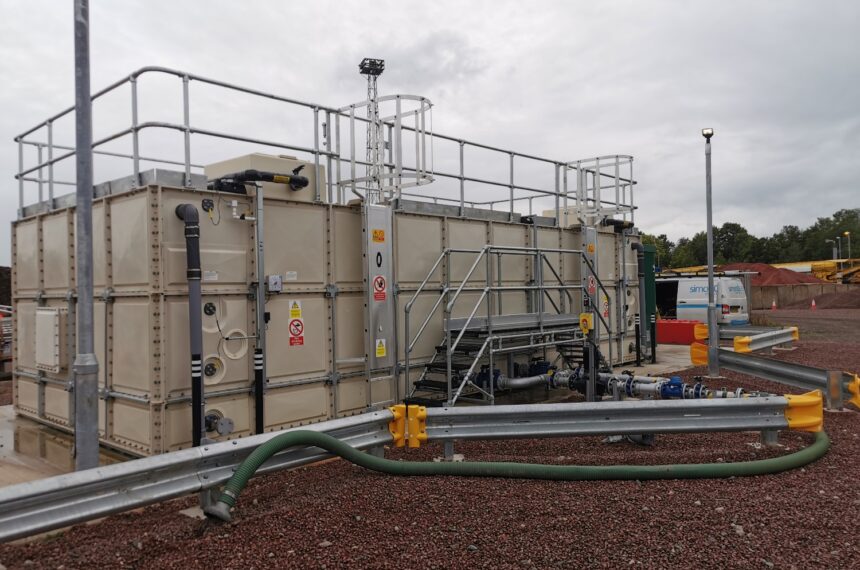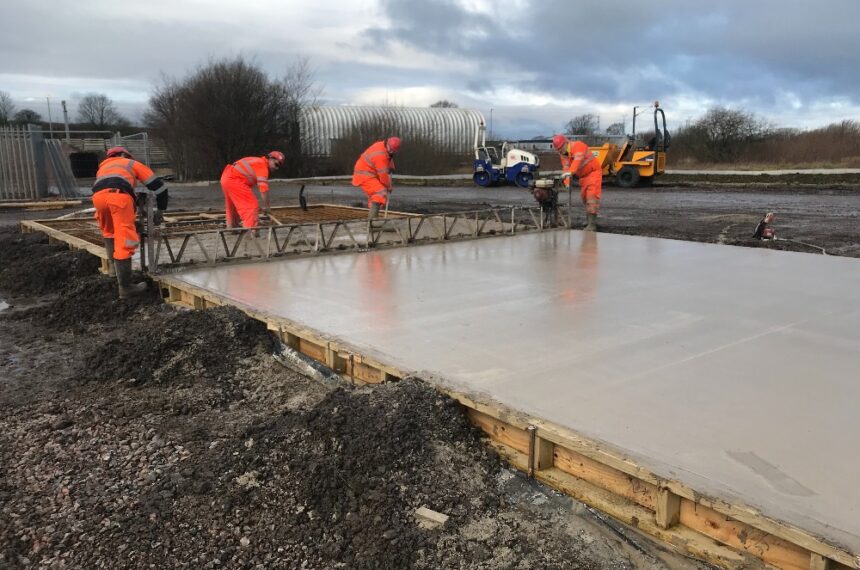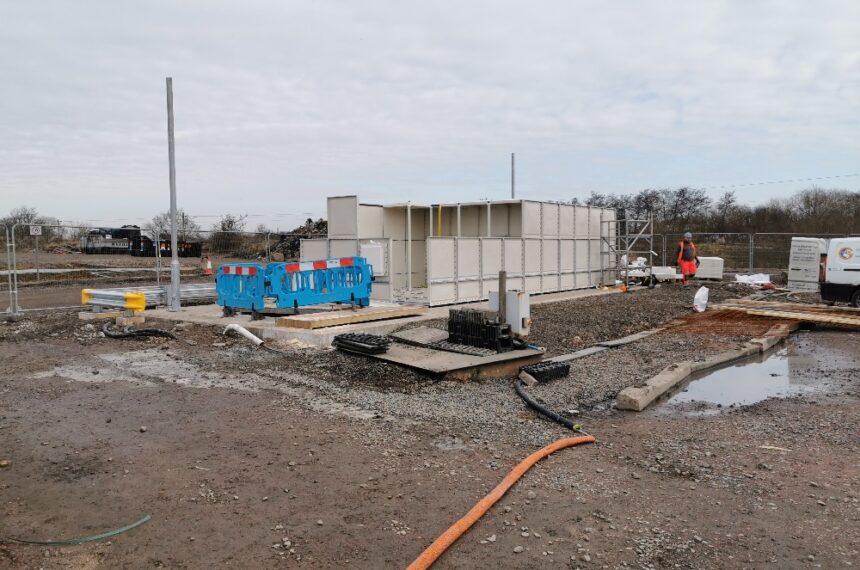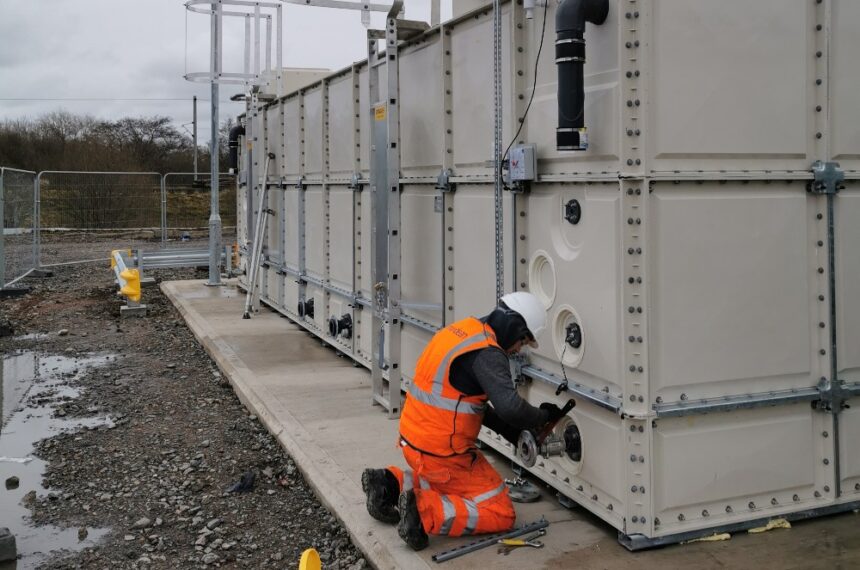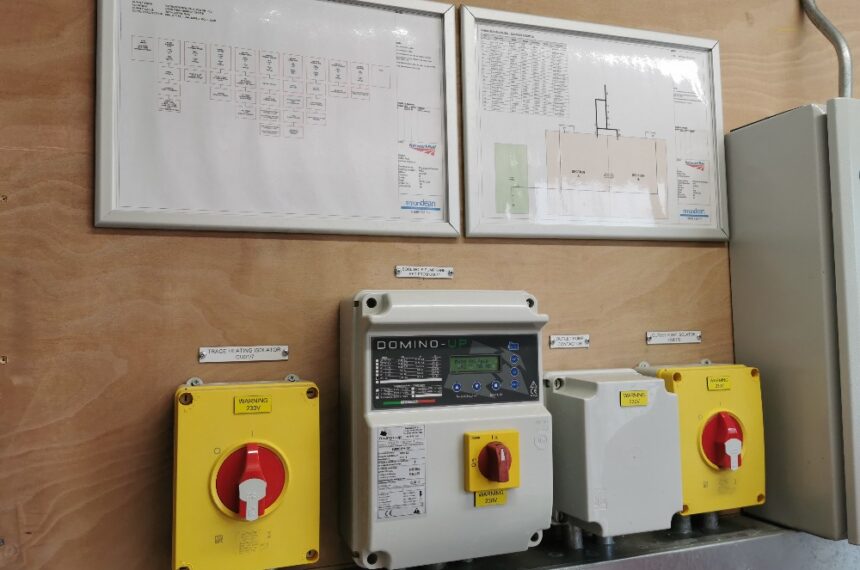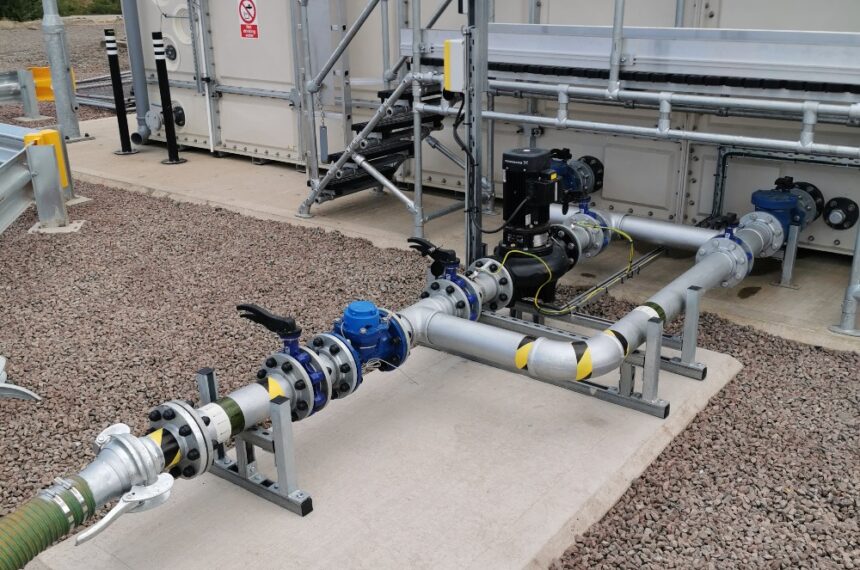Simon Dean were selected through competitive tender to carry out the installation of 100,000 litre water tank for use by the aggregate handling yard for dust suppression across the site.
This project was managed and supervised by Simon Dean engineers for the duration of the project, delivering site inductions, issuing work permits, controlling working hours, management of specialist sub-contractors and safety documentation such as Work Package Plans, Task Brief Sheets and Hand Arm Vibration Syndrome records for all operatives on site.
The work scope included, clearance of the existing site and removal of the existing temporary water bowsers ready for the works to commence.
The existing water bore hole onsite was re-drilled to allow for the for the depth to be increased, inline with Environment Agency conditions, it was then relined and a new submersible pump installed down the well ready for the above ground civil engineering works to commence.
The concrete pad on which the tank was to be laid and the sump hole for the bore hole had exacting design specification detail to ensure the load bearing capacity and structural integrity of the concrete slab was sufficient for the tank, associated equipment and the 100,000 litre water content.
We progressed through the build in a methodical manner to meet our key milestones however suffered one slippage at a key point of the project due to sustained inclement weather during the period that 95sqm of concrete was to be poured. We worked with Network Rail to keep them updated before, during and after the slip to the programme which resulted in us running 3 days behind schedule.
Once the concrete was poured, we installed a temporary frost protection membrane due to the continued period of cold weather which then delayed the delivery of the GRP enclosure. Having removed the frost protection, full progress was resumed, to concurrently commence works on the both the GRP enclosure and the tank erection to bring the programme back inline on a busy site.
A testimony to the civils delivery excellence was confirmed during the tank installation where it was verified the slab met the precise level tolerance of 2mm in 1m variation across the slab allowing the installation of the tank to commence unhindered.
Despite the scheme being build only, having been designed by others, Simon Dean were able to foresee and engineer out a potential issue with the GRP enclosure. The original specification had no facility to vertically remove the 3m section of the bore hole pump pipework, we identified that installing a cubicle with a removable roof would be the best solution and consequently scoured the market to find a roof that can be removed as a modular component preventing the need for design changes and incurred costs.
As the progress of the GRP modular split tank continued the electrical and mechanical elements commenced bringing new distribution equipment, galvanised cable containment, tank control panels, pump control panels and control sensors into place for connection.
The mechanical element of the project progressed to install the 50mm and 100mm galvanised pipework complete with pumps, isolation valves, non-return valves and water meters to the project supplying the two sides of the tank on the incoming side and joining two outlets to provide the outlet pipework to which the Yard’s equipment can connect.
Throughout the project we raised a number of technical queries which allowed us to collaborate with Network Rail to refine details on the job and provide innovative solutions to challenges.
Due to our experience and knowledge we considered the proposed floor material to sit over the sump and suggested that the galvanised durbar be exchanged for non-slip GRP mesh as this would present less manual handling risk for any operatives who may be required to remove the mesh for maintenance and repairs. The GRP mesh is not only physically lighter despite it being able to supersede the load bearing capacity of the durbar but also presented a more sustainable solution as the GRP is less susceptible to weathering which was evident on the existing equipment, all of which was completed at no cost to Network Rail.
During the final days of the project COVID-19 shut down the majority of construction sites across the UK. Simon Dean were able to quickly put solutions in place to temporarily control the water tank and ensure a water source can be maintained for the depot to operate the dust suppression equipment throughout the unknown site closure period. This solution allowed us to de-mobilise the site return all engineers home to self-isolate where required and reduce the risk for key workers keeping the depot operation through the period of time.
The final details of the project which include the final connections of the custom pump control panel and site commissioning are yet to be complete as COVID-19 commanded the site should be closed due to being non-essential despite there only being a small number of working days remaining on the project.
Throughout the project we have communicated with the Network Rail, project delivery team and the Kingmoor management team to keep everyone informed and in control but not troubled. Communication has included regular site updates with pictures and weekly achievement updates in addition to detailed plans for the week ahead and the number of hours that operatives have spent onsite.
We look forward to returning to complete this project then demonstrating and handing over the commissioned project with the as built drawings, certification and operation & maintenance manual for the client to utilise.

